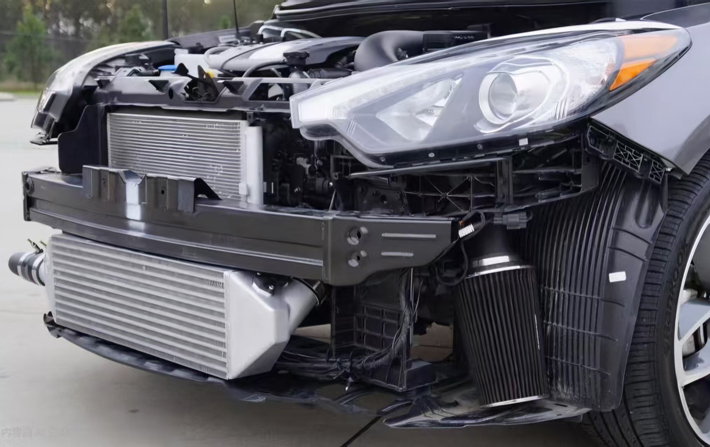Analysis of Integrated Radiator-Intercooler Designs: Advantages and Disadvantages.
2025-07-01
Integrated radiator (coolant cooling) and intercooler (turbocharged air cooling) designs have emerged to optimize engine bay space and reduce weight. While offering significant packaging benefits, this approach faces critical engineering challenges. This article analyzes its core advantages and limitations.

Part 1: Key Advantages
1. Space & Layout Optimization
Space Savings: Shared housings, brackets, and piping drastically reduce engine bay footprint – critical for compact vehicles, low-center-of-gravity layouts, or hybrid systems.
Simplified Plumbing: Centralized interfaces minimize complex coolant/charge-air routing, reducing flow resistance and assembly complexity.
2. Cost & Weight Potential
Reduced Parts Count: Consolidated components (housing, brackets) lower part numbers and tooling costs.
Easier Assembly: Modular installation streamlines production.
Potential Weight Reduction: Optimized designs *may* be lighter than separate units (implementation-dependent).
3. Response Improvement (Specific Layouts)
Front-mounted shared-airflow designs may slightly improve turbo response by exposing the intercooler faster to ambient air.
Part 2: Major Disadvantages
1. Core Challenge: Heat Interference
Efficiency Conflict: Radiators reject high heat (>90°C), while intercoolers must cool charge air (~200°C) to near-ambient temperatures. Close integration allows radiator waste heat to warm intercooler airflow/coolant, severely reducing intercooler efficiency.
Performance Impact: Elevated Intake Air Temperature (IAT) reduces air density/oxygen content, forcing ECU to retard timing/reduce boost, causing power loss (especially under high load/heat).
2. Cooling Capacity & Thermal Saturation
Concentrated Heat Load: Combines engine and turbo heat into one module, demanding extreme cooling capacity.
High-Risk Scenarios: Sustained high load (towing, track use, hot climates) risks **thermal saturation**, causing coolant overheating or IAT spikes.
Upgrade Limitations: Performance enhancements require full module replacement (costly). Split designs allow individual upgrades.
3. Serviceability & Reliability
High Repair Costs: Failure of *any* sub-component (core, pipe, housing) typically requires complete module replacement – far exceeding split-system repair costs.
Cascade Failures: Single leak (e.g., radiator) can compromise entire unit. Collision damage is more consequential.
Complex Removal: Access often requires disassembling adjacent components.
Part 3: Design Variants (Overview)
Physical + Airflow Integration: Most common. Highest heat interference risk.
Water-to-Air Intercooler Coupling: Uses liquid-cooled intercooler potentially linked to radiator circuit. Higher complexity/cost. Reduces *airflow* interference but requires precise thermal management. Primarily for premium/niche vehicles.
Summary
Integrated designs excel in space savings but face rigid limitations in heat interference – compromising cooling efficiency and peak capacity. High ownership costs and low flexibility are critical drawbacks. Viable for space-constrained, non-extreme applications; split designs remain superior for performance/high-demand use. The choice hinges on balancing packaging, cost, performance, and reliability.